#scottisih
Explore tagged Tumblr posts
Photo
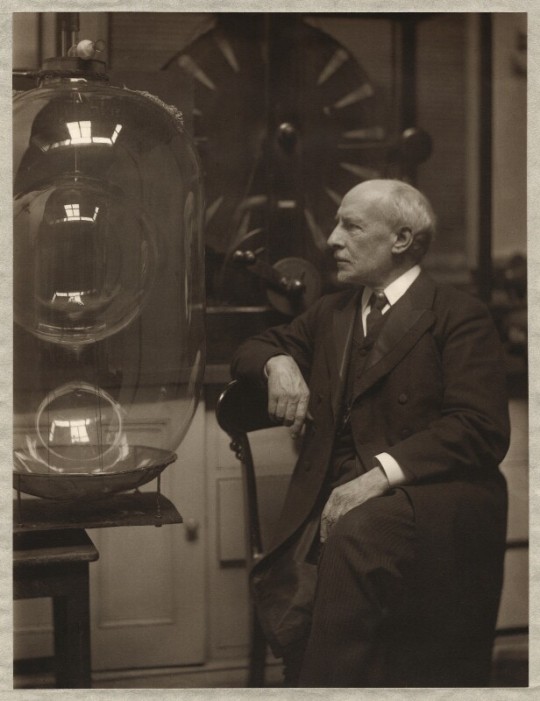
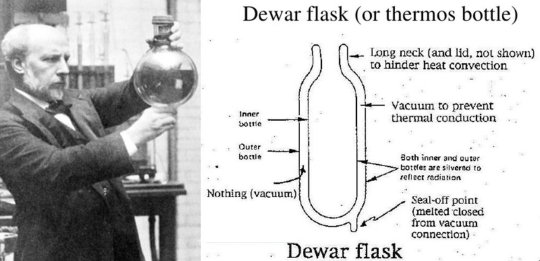
On September 20th 1842 James Dewar, inventor of the vacuum flask, born in Kincardine-on-Forth.
He was educated at Kincardine Parish School and then Dollar Academy. His parents died when he was 15. He attended the University of Edinburgh where he studied chemistry under Lyon Playfair (later Baron Playfair), becoming Playfair's personal assistant. Dewar also studied under August Kekulé at Ghent. Dewar was interested in cryogenics, the science of extreme cold and in 1898 he was the first person to make liquid hydrogen, which at the time was the coldest substance ever produced.
Cooling gas to the point where it liquefies was an expensive process and Dewar needed to find a way to prevent very cold liquids evaporating while he worked with them. He built boxes insulated with cork, hay or crumpled newspapers, but none kept the liquids cold enough. Eventually he designed a double-walled glass flask and removed the air from the space between the two walls, creating a vacuum. Liquid put inside the flask stays at the same temperature because there are no air molecules through which heat can transfer.
In the pic is one of the earliest trial flasks, later vessels had a silver coating to stop the heat being directly transmitted. Nowadays rockets are fuelled by supercooled gases stored in modern Dewar vessels that can keep liquids cold for nearly three years.
Along with Sir Frederick Augustus Abel, James Dewar also developed the explosive cordite. His early work concerned organic chemistry (suggesting a possible structure for benzene, still called ‘Dewar benzene’), atomic spectroscopy and other topics. Nine times he was nominated for a Nobel prize by distinguished international figures but, significantly, by no Britons.
Dewar never made a penny out the vacuum flask , he lost a court case against Thermos concerning the patent for his invention. While Dewar was recognised as the inventor because he did not patent his invention, he had no way to stop Thermos from using the design, if he had patented it we would possibly be using the name Dewar instead of the common name Thermos for oor wee vessels for taking with us on cold winter days to warm us up.
55 notes
·
View notes
Text
hhelp I csant stp listenning to celtic flute mustic,, its slaps so hard like ugh why is it sto goood. Spotify heeps rekcommentding it to me and i cant sotp i am beinc consumed byy scottisih folk songds
1 note
·
View note
Video
tumblr
Pretty accurate.....
72 notes
·
View notes
Photo
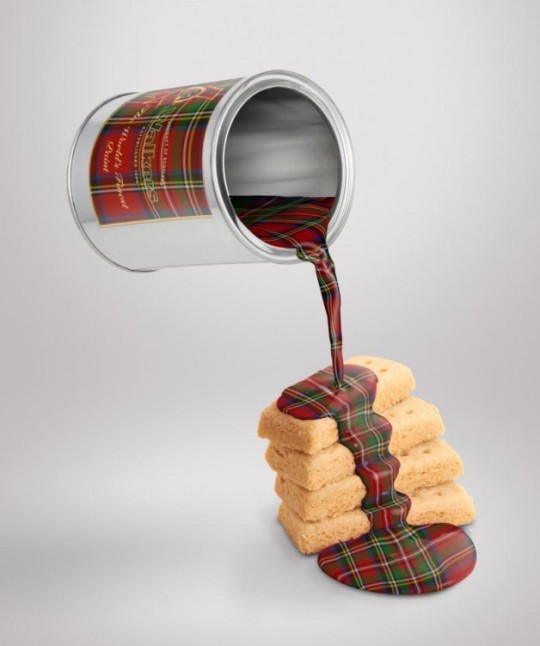
Shortbread fingers with some delicious tartan sauce!
35 notes
·
View notes
Photo
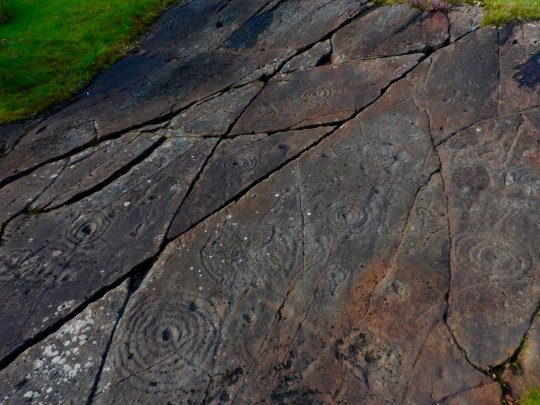
From my friend David C. Weinczok AKA The Castle Hunter on his blog and Twitter
"Now that I've sorted all 40000+ pics in my photo archive, I'll share 4 Scottish historic sites of all kinds for each letter every day. "
David has given me permission for his pics to be used in his
#ScottishWondersAtoZ, he supplies the pics I post a wee bit about the location. Hopefully it will give people an idea of where to visit in Scotland when tourism is reopened fully.
A is for Achnbabreck Cup & Ring Marks.
Still in Argyll, these well preserved Bronze Age cup and ring marks decorate a rocky outcrop at Achnabreck, at the amazing Kilmartin Glen.
Were they ritual, symbolic, spiritual, or 'just' an artistic expression? There are more questions than answers. We don't really know how old they are; all we can do is suggest that most similar rock art was carved between 3500 and 1000 BC, and the Achnabreck symbols probably date to the older end of that range, about 3000 BC.
At Achnabreck there are very large concentric ring marks on several rocky outcrops. The rings usually surround rounded depressions, or cup marks, rather like the rings of Saturn surround that planet. Gutters run through some of the rings, usually radiating out and down. Perhaps they were used to channel water out of the cup, but again, we do not know why.
The most impressive feature at Achnabreck is the circumference of the largest rings. These approach 1 metre across, that's a social distancing measure in today's language.
Achnabreck is signposted off the A819 just after it turns north into Kilmartin Glen. A forestry road runs east off the A road to a parking area, and from there a signed trail leads still further east for 500 metres to the carved stones. It should take no more than 10 minutes, and probably less, though good footwear is advisable as the trail can get wet and muddy.
Other carved rock outcrops around Kilmartin Glen include:
Ballygowan
Baluachraig
Cairnbaan
Kilmichael Glassary
Other monuments include:
Dunadd Hill Fort
Dunchraigaig Cairn
Glebe Cairn
Nether Largie North Cairn
Nether Largie Mid Cairn
Nether Largie South Cairn
Ri-Cruin Cairn
Temple Wood Stone Circle.
So there is lots to explore in this area.
35 notes
·
View notes
Text
August 27th 1784 saw the first balloon ascent in the British Isles by James Tytler, Edinburgh.
James Tytler was born in 1745, son of the minister at Fearn in Angus, and after a good education at the parish school, and two or three years as a surgeon’s apprentice in Forfar, he made his way to Edinburgh to study medicine at the University. The following summer, 1765, he took service aboard the Royal Bounty, a Leith whaler, as ship’s surgeon. Then came the first of many misfortunes during his life – he got married. The marriage was hasty and he now had to earn enough to support his wife, making the continuance of his studies impossible. He set up business in Leith as a pharmacist. Business was poor, eventually forcing him to flee to England, out of the reach of his creditors.
He returned to Edinburgh, now with five children as well, and set about making a living from what seemed to be his greatest skill - writing. He was a very prolific writer and editor, although the vast majority of his work went anonymously, being employed in the main by other writers and publishers. He is renowned to have had an amazing skill at editing, being able to précis an item as quickly as most people could read it.
After some attempts at his own publications, a spell in the debtors' sanctuary at Holyrood, and his wife leaving him, he eventually found steady employment in editing the second edition of the Encyclopaedia Britannica, much underpaid at sixteen shillings a week. He spent the next six or seven years at this monumental work while living at Duddingston, using an upturned tub as a writing desk. The Encyclopaedia filled over 9,000 pages and it was during his researches for one of the appendices, covering Air Balloons and their development in the past year, that his interest was sparked.
He set about constructing his Grand Edinburgh Fire Balloon with very little money and probably even less public support. He charged 6d to see a model, and eventually had his balloon ready for a public inflation, though not for a flight. At the time Edinburgh had a building nicknamed "the largest pigeon-house in Europe" - the partly built Register House at the East End of Princes Street. This made an excellent venue for Tytler to test his 40 foot tall balloon, the unfinished dome providing shelter and support.
James Tytler then advertised the public ascent, to be held at Comely Garden (a pleasure garden, now the site of Milton Street, Waverley Park, and the Elsie Inglis Hospital) on 6 August 1784. Needless to say, James had his normal luck - bad luck - all his attempts being dogged by either technical problems or the weather. The press attacked him, and the mob attacked his balloon. Discouraged but not beaten, he was ready again towards the end of the month.
On Wednesday 25 August he inflated the balloon at an early hour in the morning, left the fire burning for another hour, stepped into his basket, and was released. The Grand Edinburgh Fire Balloon rose from the ground, tethered. According to the Edinburgh Evening Courant "the balloon, together with the projector himself, and basket in which he sat, were fairly floated". Two days later he had even greater success, "navigating the atmosphere" for about half a mile to Restalrig, and on the 31st he made another ascent. Thus were made the first flights from British soil, predating both Lunardi and Sadler. Tytler was famous. A hero. Until another attempt failed and the ignorant press again criticised him.
James Tytler's life after his ballooning successes was no less interesting, with another stay in the Holyrood sanctuary, further writing and publishing, divorce proceedings, another wife and more children, and eventually an indictment for seditious libel which led to his being outlawed. His last few years were spent in Salem, Massachusetts ., where he died in 1804.
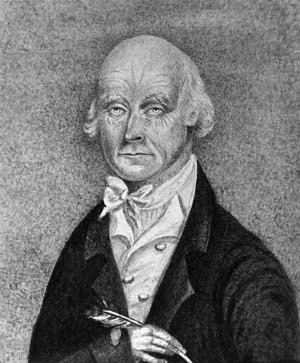

15 notes
·
View notes
Video
tumblr
As crowds across the street look on and boo, Boris attempts to dominate the First Minister, Nicola Sturgeon by ushering her into Bute house. This is what UN consultant and former diplomatic attaché had to say about it....
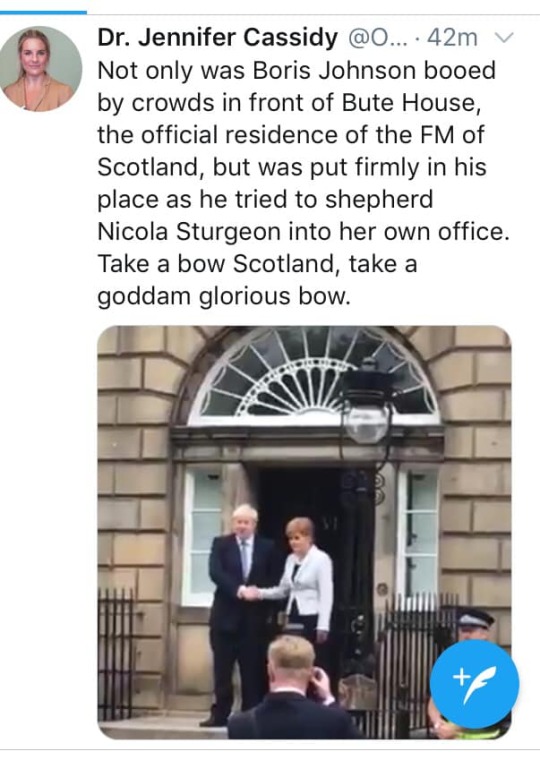
672 notes
·
View notes
Text
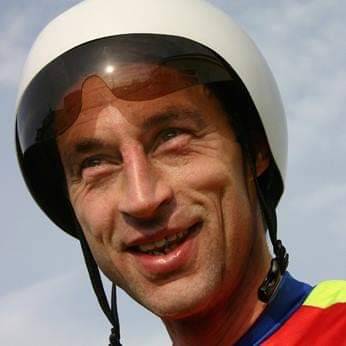
On August 19th 1994 Graham Obree, from Irvine in Ayrshire, broke the world record and became the world pursuit cycle champion over 4,000 metres in Hamar, Norway.
Born in 1965, Graeme Obree developed a keen interest in cycling as a youngster and regularly cycled long distances by his early teens. Graeme went on to regularly win senior races as a junior.
Francesco Moser’s hour record set in 1984 inspired Graeme and he went on to break it using his own ‘crouch’ position and a bike known as ‘Old Faithful’. He lost the record to Chris Boardman six days later but made good by winning the World Pursuit title that year and regaining the record in Bordeaux, France the following year, covering 52.713kms.
His innovative riding styles were adopted by other riders before being banned by the governing body at the time.
Graeme broke several British records in his time as a professional athlete as well as winning seven British titles including the 1997 Time Trial Championship in which he rode in a conventional position in order to show his ability as an athlete.
In 2003, Graeme published his autobiography The Flying Scotsman, and a film of the same title followed, it's a cracking film, if you haven't seen it look it up!
11 notes
·
View notes
Photo

From my friend David C. Weinczok AKA The Castle Hunter on his blog and Twitter.
"Now that I've sorted all 40000+ pics in my photo archive, I'll share 4 Scottish historic sites of all kinds for each letter every day. "
David has given me permission for his pics to be used in his #ScottishWondersAtoZ, he supplies the pics I post a wee bit about the location. Hopefully it will give people an idea of where to visit in Scotland when tourism is reopened fully.
A is for Abernethy Round Tower.
Abernethy Round Tower is one of the two round towers of Irish style surviving in Scotland, dating from the end of the 11th century. The tower is 15ft in diameter at its base and 74ft high it can be found in the village of Abernethy off the A913 road,east of the Bridge of Earn, Perth and Kinross.
The tower is originally thought to have served as a bell tower for an adjacent church, as well as providing a secure place for members of the community and their treasured possessions in times of danger.
The walls are 3.5 ft thick. The 12 lower layers are of a different coloured stone to the rest of the building, leading to speculation that the base was built earlier than the rest. There are indications that the tower originally had six wooden floors, probably connected by ladders.
Excavations to the tower in 1821 uncovered a skeleton and fragments of an urn. Below these were flagstones and ‘many more human bones’, including seven skulls. These burials pre-date the construction of the tower, but by how long is not certain.
Various changes have been made to the tower over the years, including the installation of an iron spiral staircase when it became a lookout tower, windows and an outside clock. The current clock dates from 1868. A pictish stone, unearthed in Abernethy’s School Wynd and mounted was added in the early 20th century, the tower also has an iron joug or pillory attached.
Quite why or how Abernethy acquired its bell tower is a mystery. The other Tower is further up the East in Brechin.
You can see loads more pics of the Tower through the years here https://canmore.org.uk/site/27914/abernethy-round-tower
14 notes
·
View notes
Photo
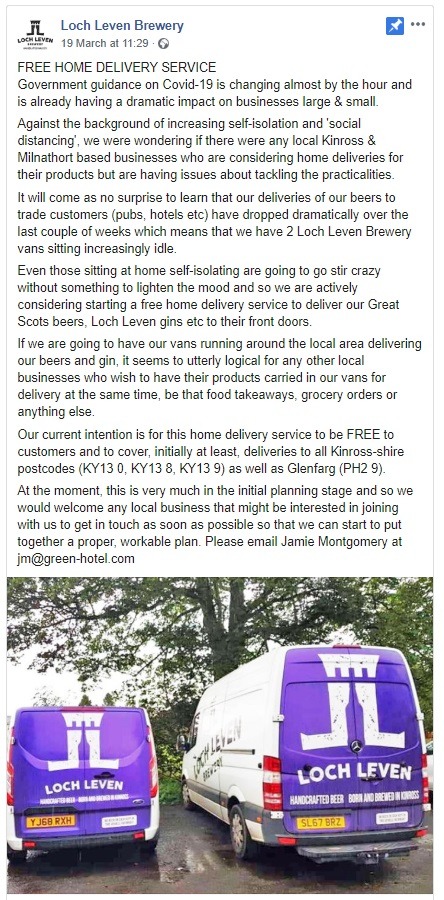
Free Home Delivery from Loch Leven Brewery
27 notes
·
View notes
Photo
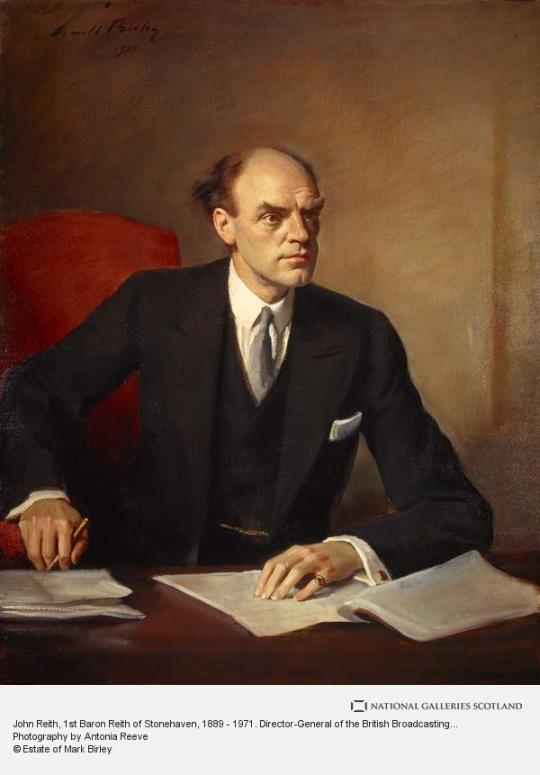
On 16th June 1971 Lord Reith died.
Born in Stonehaven in 1889, son of a Church of Scotland Minister. During advances in the First World War he would sing the "Old Hundredth", in the belief that The Lord would not allow the interruption of the traditional Scottish Version of the Psalm.
Of his time in the trenches he wrote "I had never witnessed such sights before; this was indeed a battlefield. I had seen dead men and dead horses but never in these numbers."
On 7th October 1915 Reith was sent to repair a section of a front-line trench destroyed by a mine. While carrying out the work he was shot in the head by a German sniper. Some of the bone in his face had been shot away and he lost a lot of blood but remarkably he was not dangerously wounded.
Reith was sent to Scotland to recover and after he was released from hospital he joined the staff of a munitions factory in Gretna. In March 1916 he was sent by the Ministry of Munitions to the United States to buy rifles. On his return he was transferred to the Royal Marine Engineers.
At the end of the war, Reith returned to Glasgow to work in engineering. He was the first General Manager/Managing Director of the BBC from 1922 to 1927 and set the non commercial model for the corporation that has continued to this day. Reith is regarded as the founding father of public service broadcasting
The Reith Lectures are held in his Memory.
11 notes
·
View notes
Video
youtube
One of the most endearing songs from the last 40 years is Caledonia, be it the original, as seen here, the Frankie Miller version or one of the many others that have appeared over the years.
The story behind the song is that Dougie MacLean, a young man in his early twenties had been busking around Europe with three Irish guys, while in France with another few Scots he began feeling a wee bit homesick, he says he penned Caledonia in about ten minutes sitting on a beach in Brittany, then went back to the Youth Hostel, finished it off and played it to his friends, it was the final straw, they packed their bags and headed home next day. Modestly Dougie said "I was genuinely homesick and it was just a little song I wrote."
The song's effect on expatriate Scots was summed up by Desert Island Discs presenter Kirsty Young, who chose it to mark the programme's 75th anniversary in 2017.
She said: "This song for me exquisitely captures the sensation of having Scotland in your soul and only ever feeling truly complete when you are there."
I lived in England during the 90's I left Scotland just after the song became famous due to it being used in THAT Tennents Lager advert, sung by Frankie Miller, and the song stuck with me and helped me through my time down there, well that and The Proclaimers!
MacLean first published the song his 1979 joint album credited to Alan Roberts and Doug MacLean, also called Caledonia, to date the song has not made an impact on the charts, Miller's version peaked at number 45, some songs don't need to be massive hits to be well remembered and loved. MacLean, who is now 64, it will be his 65 birthday later this month, maybe I should have waited and posted this then, but I just get ideas in my head sometimes, he grew up in the village of Butterstone near Dunkeld in Perthshire and started playing fiddle with traditional Scottish music band the Tannahill Weavers before going solo.
He was still finding his way as a songwriter when he wrote Caledonia and says that if he tried to write it now it would be much more complex lyrically and musically.
"I probably would not be able to write something like Caledonia now, which is fascinating as a songwriter," he says.
Other popular versions of the song are from Ireland's Dolores Keane, Paolo Nutini, Celtic Women and Amy MacDonald. Perhaps the most unusual version is by Norwegian singer Hanne Krogh who recorded the song in her own language, Caledonia was changed to Haugalandet, an area on the west coast of the country. Look it up on Youtube, she has a nice voice.
I don't know if you can see the changes that have come over me
In these last few days I've been afraid that I might drift away
So I've been telling old stories, singing songs, that make me think about where I come from
That's the reason why I seem so far away today
CHORUS
Let me tell you that I love you and I think about you all the time
Caledonia you're calling me and now I'm going home
But if I should become a stranger you know that it would make me more than sad
Caledonia's been everything I've ever had
I have moved and I've kept on moving, proved the points that I needed proving
Lost the friends that I needed losing, found others on the way
I have tried and I've kept on trying, stolen dreams, yes there's no denying*
I have travelled hard sometimes with conscience flying somewhere in the wind
CHORUS
Now I'm sitting here before the fire, the empty room the forest choir
The flames that couldn't get any higher they've withered now they've gone
But I'm steady thinking, my way is clear and I know what I will do tomorrow
When the hands have shaken and the kisses flow then I will disappear
CHORUS
161 notes
·
View notes
Photo
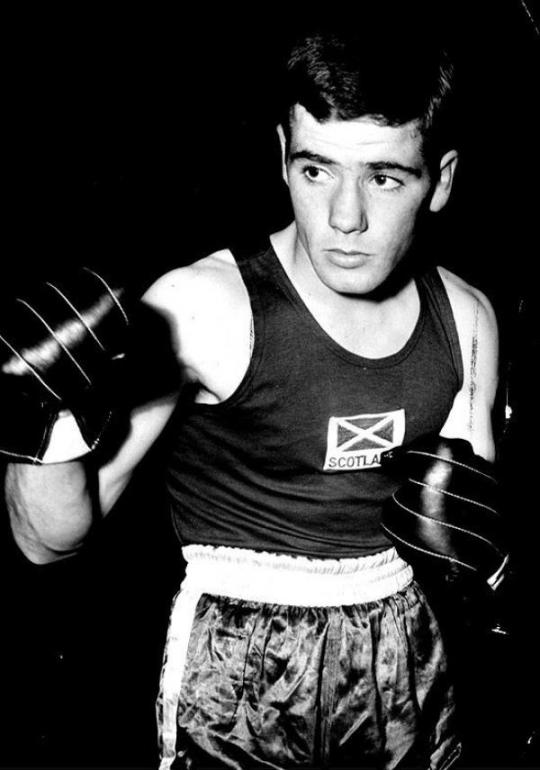
On June 14th 1966 Scottish boxer Walter McGowan won the World Fly-weight Championship.
McGowan was one of only 13 Scottish world champions and unquestionably one of the most talented. In an eight year professional career, he mixed almost exclusively at top British and Commonwealth level, taking both of those titles before claiming world honours on this day in 66.
Born on 13 October 1942 in the racecourse town of Hamilton, Walter (like future world flyweight champion Pat Clinton who followed him) had original ambitions to be a jockey, but he soon forgot about that when, guided by his dad, who was known as Joe Gans, to a career in the ring.
Standing just over 5ft 2ins and usually weighing 8st or less, his speed and skills, which included lightning fast footwork, were coupled with a punching power that belied his stature. In April 1961, at the age of 18, McGowan won the highly prestigious ABA flyweight championship, beating Ray Stacey in the final.
McGowan Snr, who himself had boxed under the name Joe Gans, trained his son hard. Cold baths and five-mile runs were a daily occurrence, and McGowan benefited greatly, acquiring great stamina. In his first professional fight in August 1961, McGowan stopped George McDade in the third round of their flyweight contest at the Kelvin Hall, Glasgow.
He would go on to amass a record of 32 wins, seven losses and a draw. His last fight was in November 1969 against Domenico Antonio Chiloiro of Italy, which McGowan won on points. It has been said he would have had a longer career had he not suffered from cuts during fights, as you can see by his bloody face in the pic.
He then retired from boxing at the age of just 27.
He was inducted into the Scottish Sports Hall of Fame in 2002, alongside the likes of Scottish boxing great Ken Buchanan.
Walter McGowan died at Monklands Hospital at Airdrie on 15 February 2016
8 notes
·
View notes
Photo
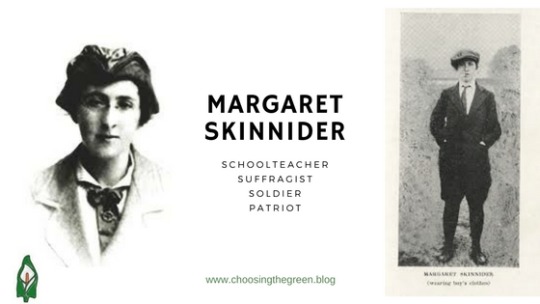
Margaret Skinnider, feminist schoolteacher and sniper, was born October 10th 1892 in Coatbridge
Skinnider was only female seriously wounded during The Easter Rising, she was not the only Scot in Ireland fighting the British at this time, she was possibly the only Scottish Woman though.
Soon after she was born, her family were on their way up in the world.
Her parents moved in the 1900s to the west end of Glasgow where they ran second-hand goods shops and educated their daughters as teachers. The boys in the family travelled abroad for work, leaving Margaret to grow up in a highly-educated and female-dominated household.She became a school teacher and a militant suffragette.
Margaret was involved in the pickets at Perth Prison where hunger-striking suffragists were force-fed. She was happy to take a shift picketing at the prison gates during the royal visit to Perth in 1914 for she “cared not for Kings and Queens”.
Nevertheless, when war broke out she joined a rifle club for the “defence of the British empire”, probably the City of Glasgow Women’s Rifle Club. This club practised not far from the school where she taught in Maryhill, the idea being for women to defend themselves against atrocities in the event of a German invasion. She became a crack shot, a skill she’d employ later in ways that would have caused her feather-hatted instructors to reach for the smelling salts.
It was around this time that Margaret joined the Glasgow-based Ann Devlin branch of Cumann na mBan, the women’s section of the Irish Volunteers, and helped their efforts to steal weapons and explosives.Soon she became a smuggler, crossing the Irish Sea with detonators hidden in her hat.
This was dangerous stuff, and not just from the risk of getting caught - one false move could have set them off.
From this it was a short step to joining her heroine Countess Markievicz in the Irish Citizen Army, under fellow-Scot James Connolly, and taking part in the rising on Easter Monday 1916. Margaret served initially with the group positioned around St Stephen’s Green, first of all cycling around Dublin braving rifle and machine gun fire to carry dispatches to the occupied GPO, then as a sniper herself in the Royal College of Surgeons.She recorded that several times she shot at men and saw them fall.
By Wednesday of Easter Week, she was arguing with male commanders that she should be involved in the riskiest missions. The proclamation of the Irish Republic guaranteed equal rights to women and Margaret was willing to face equal dangers.However while on a fire-raising mission, a member of her group tried to force open the door of a house with his loaded gun.It went off, betraying their position and they drew fire from British troops.Margaret was hit three times.She was carried back to the College of Surgeons where her comrades dug the bullets out of her back and tried to disinfect her wounds with “corrosive sublimate” (mercuric chloride).Only they got it wrong and badly burned her skin.
After the surrender, in agony from her wounds and suffering from pneumonia, she was taken to St Vincent’s Hospital. She lived, but it was close. Her severe injuries spared her a prison sentence and her “loyal Scots accent” helped her get a permit to go home to Scotland.
But by December she was in New York. Here she joined the PR effort for the Irish Republican cause with her book Doing My Bit for Ireland.
Eventually she moved back to Ireland where in 1925 her pension application was rejected because she was told that the Army Pensions Act was “only applicable to soldiers as generally understood in the masculine sense”.It must have been a galling piece of sexism for the veteran suffragette and republican, but she persevered and in 1938 was finally awarded her pension. She died on 10 October, 1971.Although she is buried in Glasnevin Cemetery in Dublin, near Countess Markievicz, her name is still remembered today in her native Coatbridge.
Read more on the life of Margaret Skinnider here https://www.storiesfrom1916.com/1916-easter-rising/margaret-skinnider
94 notes
·
View notes
Photo










On August 23rd 1913 work began on the rebuilding of Eilean Donan Castle.
The castle, at Loch Duich was destroyed by the Royal Navy during the minor Jacobite Rising of 1719, when Jacobites and their Spanish supporters garrisoned the stronghold. A number of Spanish soldiers were taken hostage with the remainder fighting at the Battle of Glenshiel in June 1719, which ended in a defeat for the Jacobites.
Eilean Donan Castle, once the traditional seat of Clan Mackenzie, lay a ruin for the next 200 years. Lt. Col. John MacRae-Gilstrap (on the left in the second picture with the kilt) of the MacRae's of Conchra, the traditional bodyguards to Clan Mackenzie, bought the castle in 1911 and launched the restoration in 1913. The job was to take almost 20 years. Stones, some weighing about 1.5tons, were taken from the hills by Lochlongside and carried to the castle by horse and boat. Those working on the long restoration job were charged with rebuilding walls that were 13-feet deep in parts.
The restoration was praised at a time when Scottish castles were facing wholesale demolition given the rising costs of maintaining such properties. I love the pic of members of the MacRae-Gilstrap family check in on progress - along with the family dog. Lt Col MacRae-Gilstrap was praised individually for his vision and his never-dying love of the Gael...and determination that the clan spirit shall live.
The restoration of Eilean Donan has been described as a "phoenix rising from the ashes. Over two decades, one of the most recognisable landmarks in Scotland took shape.The final piece of the job was adding the now-famous bridge to the island castle.
The opening ceremony on a rainy day in July 1932 drew hundreds of people from this part of the Highlands. An account from the opening queried whether any castle in the world could surpass the "natural grandeur of the the rugged setting" of Eilean Donan. Today, Eilean Donan Castle attracts more than 500,000 visitors a year. It is easy to see why.
142 notes
·
View notes
Video
tumblr
Freedom!!!!!!!!!!
#Scotland#scottisih#auob#all under one banner#Edinburgh#indyref2#independence#rally#march#william wallace
61 notes
·
View notes